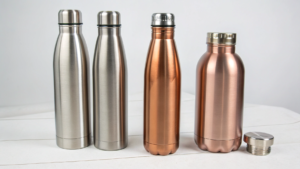Is a Stainless Steel Water Bottle Safe?
Looking for a new water bottle but worried about materials? You want to be sure it is safe. What is the truth?
Yes, a stainless steel water bottle is safe. Most experts agree it is one of the safest options. Make sure it is made from food-grade 18/8 or 18/10 stainless steel1 for the best quality.
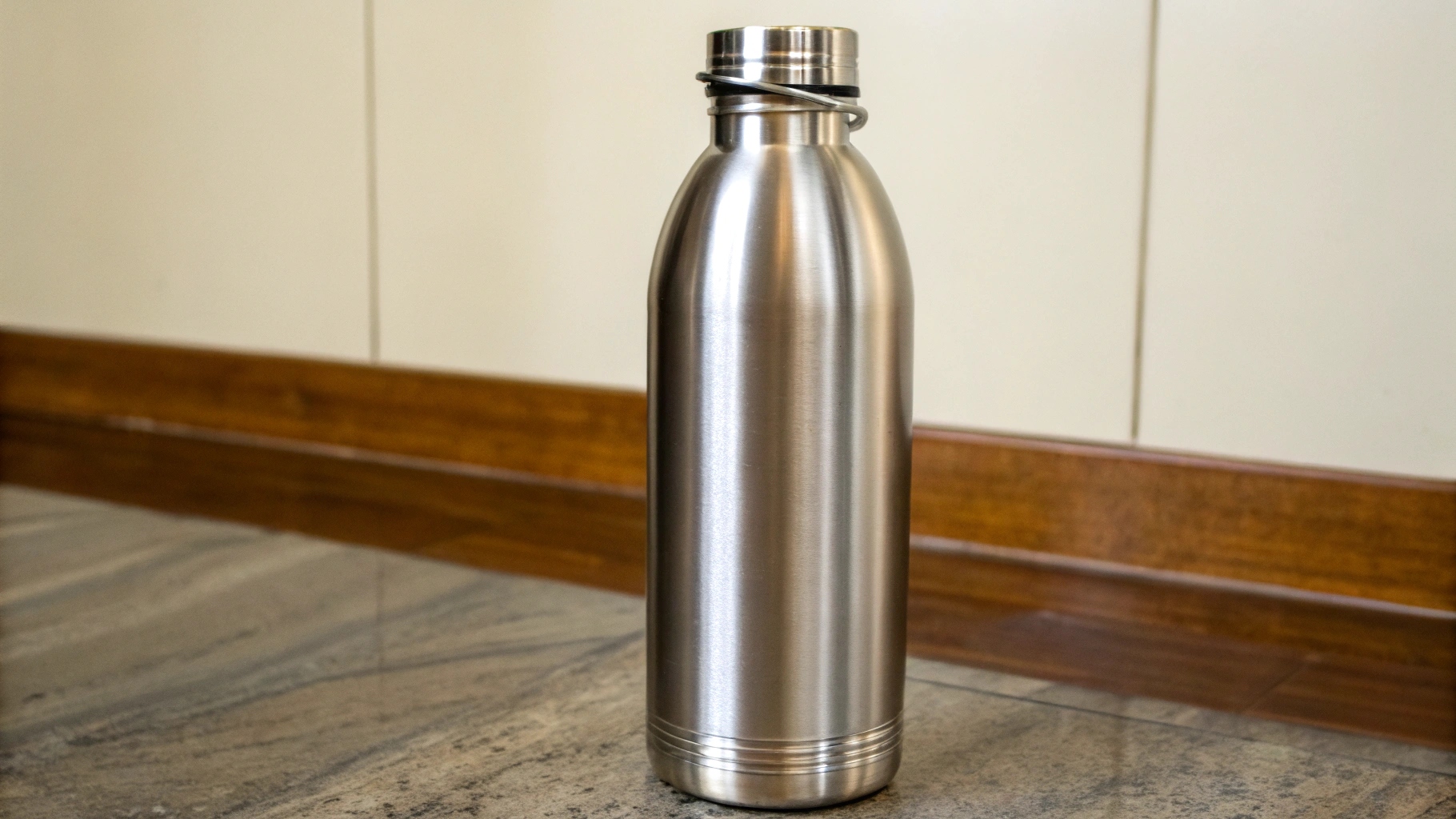
I often help companies choose gifts for their employees or customers. Water bottles are a very popular choice. People use them every day. This is why the safety of the material is so important. Giving a safe, high-quality item shows you care about the people receiving it. Stainless steel is a material I recommend often.
Is it safe to drink water from stainless steel bottles?
You put water in your bottle every day. You drink from it many times. Is the material really safe over time?
It is safe to drink water from stainless steel bottles. High-quality stainless steel does not have chemicals that will get into your water. It is a stable material that is good for holding liquids for a long time.
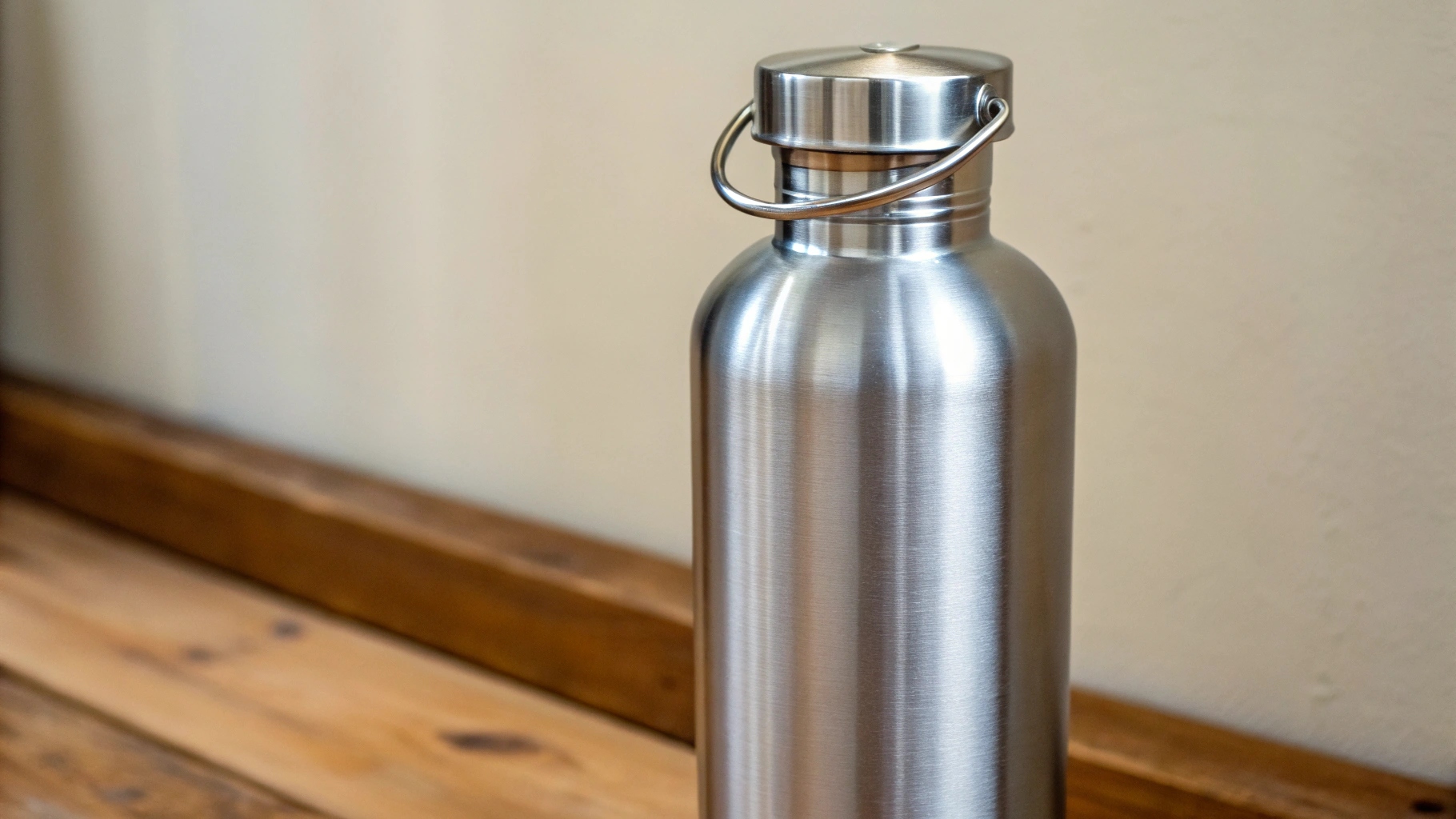
One main reason stainless steel is safe is that it does not leach chemicals. Some other materials, like certain plastics, can release tiny amounts of chemicals into the water, especially when they get warm or old. Stainless steel does not do this. It is a non-reactive metal2. This means it does not interact with the water it holds. I tell clients this is a big plus. You give a gift that people can feel good about using daily for their health.
Why Stainless Steel is Safe
The safety comes from its makeup.
- No Leaching: It does not let chemicals move from the bottle material into the water.
- Non-Porous: The surface is smooth. It does not have tiny holes where bacteria can hide easily. This makes it more hygienic if cleaned well.
- Does Not Hold Flavors: Unlike some materials, stainless steel usually does not keep old tastes or smells. Your water tastes like water.
Understanding Stainless Steel Grades
The quality matters. Look for "food-grade" stainless steel. This is usually 18/8 or 18/10.
- 18/8 Stainless Steel: This means it is 18% chromium and 8% nickel. Chromium makes it rust-resistant. Nickel makes it more durable and resistant to corrosion.
- 18/10 Stainless Steel: This has more nickel. It is even more resistant to rust and corrosion. Both are safe for food and drinks.
Choosing 18/8 or 18/10 ensures you are getting a safe, durable product. Lower grades might contain more iron and could rust. Giving a gift made from this safe material builds trust in your brand. It shows you chose quality for the recipient's well-being.
| Material | Leaches Chemicals? | Reacts with Liquids? | Holds Flavors? | Durability |
|---|---|---|---|---|
| Stainless Steel | No | No | Rarely | High |
| Glass | No | No | No | Medium |
| Some Plastics | Yes (can) | Yes (can) | Yes | High |
| Aluminum (Lined) | No (if lining OK) | No | Can | Medium |
Knowing the material grade helps you pick a truly safe bottle. It is a simple check that gives peace of mind to the person using it.
What is the healthiest material for a water bottle?
There are so many bottles out there. Plastic, glass, metal. Which material is the very best for my health?
The healthiest materials for a water bottle3 are generally considered to be stainless steel (specifically 18/8 or 18/10 food-grade) and glass. These materials do not leach harmful chemicals into your water.
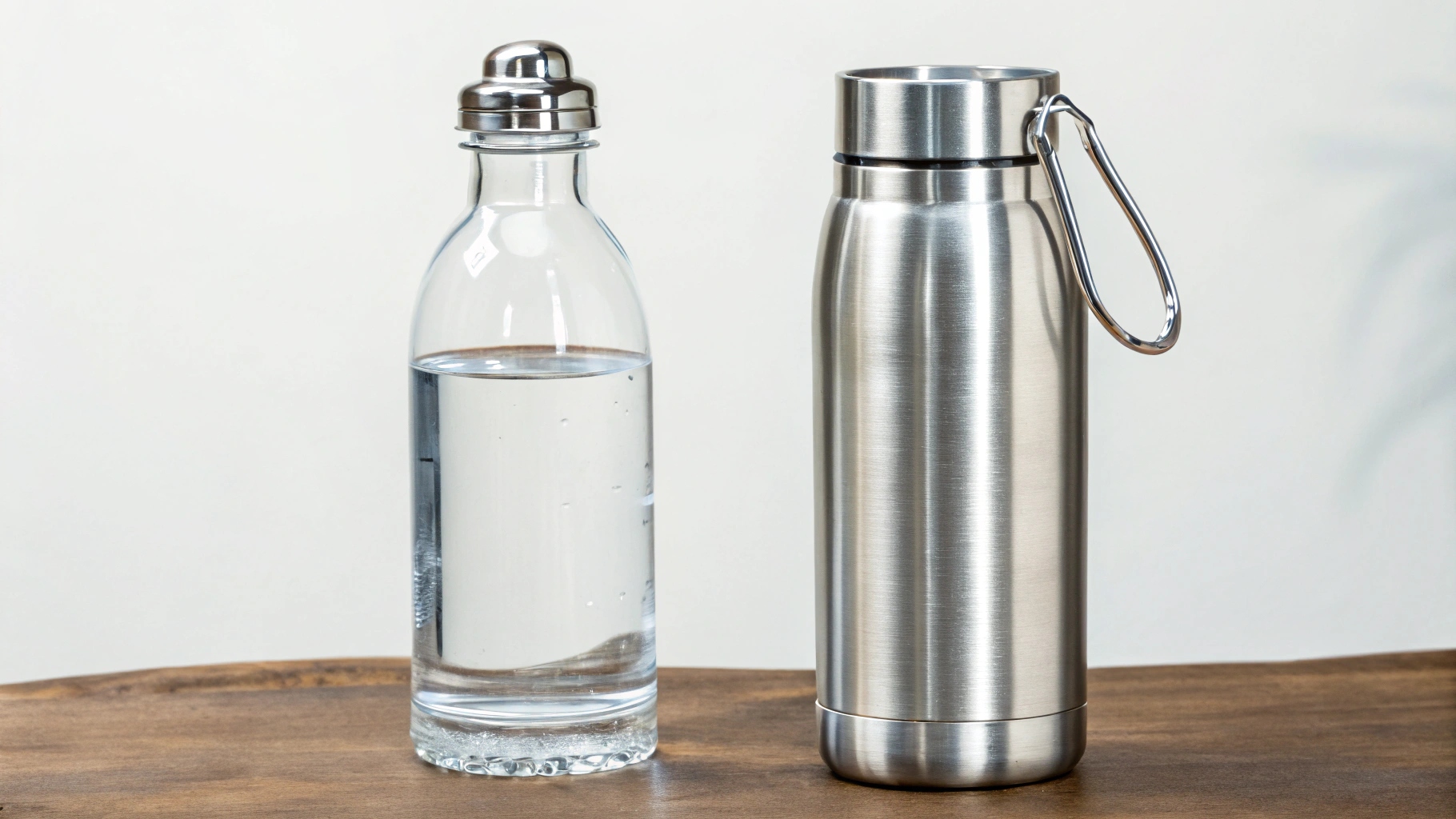
When people ask me about the healthiest bottle material, I usually point to stainless steel and glass. Both are excellent because they are non-porous and non-reactive. This means nothing from the bottle material gets into your drink. They do not contain chemicals like BPA or phthalates, which have raised health concerns with some plastics. As someone helping businesses with gifts, offering bottles made from these materials is a way to show the company cares about health and safety.
Stainless Steel vs. Glass
Both are healthy choices, but they are different.
- Stainless Steel (18/8): Very durable, does not break if dropped. Can be insulated to keep drinks hot or cold. Can be heavier than plastic. Cannot see inside easily.
- Glass: Made from natural material. No chance of leaching. Water tastes very pure. Can break easily. Often heavier than plastic or steel (unless it has a silicone sleeve). No insulation unless it is a special double-walled design.
Plastic bottles are common. Many are now made without BPA. This is better. But some people still worry about other chemicals in plastic getting into drinks over time. Stainless steel and glass avoid this worry completely. They offer a clean drink.
Making a Healthy Choice
For corporate gifts, stainless steel is often a practical choice. It is durable. It lasts a long time. People can carry it around without worrying about it breaking. This means your branded gift stays with them longer. It is a healthy option that also serves the business goal of brand visibility. Glass bottles are nice too, maybe for an office setting where they are less likely to be dropped.
| Material | Safety (Leaching) | Durability | Insulation Possible? | Transparency | Weight |
|---|---|---|---|---|---|
| Stainless Steel | Very High | High | Yes | No | Medium-High |
| Glass | Very High | Low | Some | Yes | High |
| Safe Plastic (e.g. Tritan) | High (BPA-free) | High | No | Yes | Low |
Choosing stainless steel shows you picked a gift with health in mind. This reflects well on your brand. It is a healthy choice that people appreciate for daily use.
What are the disadvantages of a stainless steel water bottle?
No product is perfect for everyone. Stainless steel bottles have good points. But do they have any downsides I should know about?
Yes, stainless steel water bottles do have some disadvantages. They can be heavier and cost more than plastic bottles. They might get dents if you drop them, and you cannot see how much water is left inside easily.
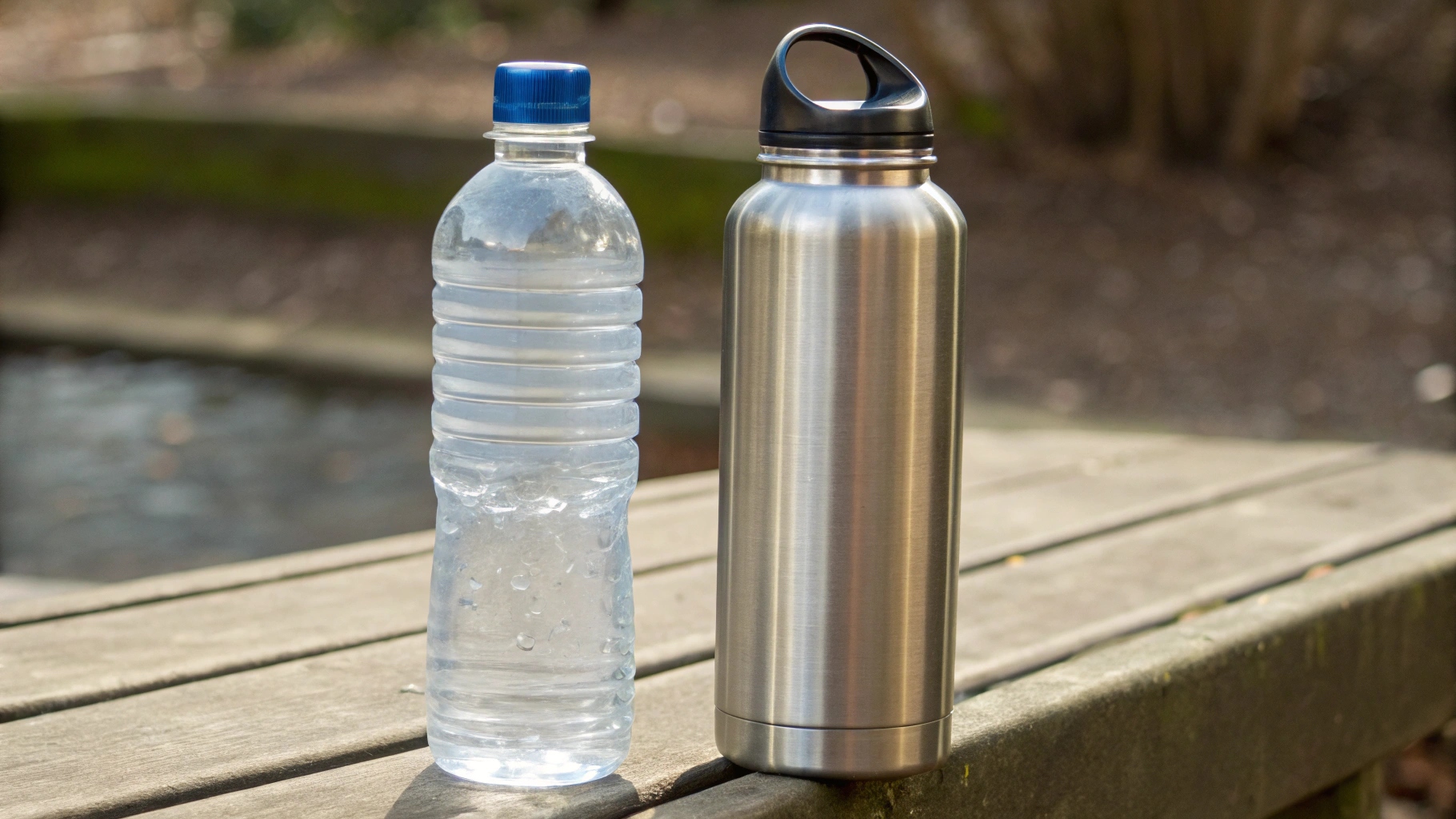
While stainless steel is a great choice for safety and durability, it is not right in every single situation. It has some features that might not work for everyone. When a company is deciding on gifts, I help them weigh these points. It is about finding the best fit for the people who will receive the gift and how they will use it. Knowing the downsides helps make a good decision.
Things to Consider
Here are the main disadvantages.
- Weight: Stainless steel bottles, especially insulated ones, are heavier than plastic bottles. If someone needs a very light bottle for running or hiking, this might be a problem.
- Cost: They usually cost more to make and buy than simple plastic bottles. This is a budget point for companies buying many as gifts.
- Denting: If you drop a stainless steel bottle, it can get a dent. This does not usually affect how it works, but it changes the look.
- Cannot See Contents: You cannot look through stainless steel. You have to open it to see how much liquid is inside. Some people find this annoying.
- Potential Metallic Taste: Very rarely, some people say they taste metal. This is less common with high quality steel and good cleaning.
- Not for Microwave: Metal cannot go in a microwave.
These points are tradeoffs for the safety and durability you get. For many people, the benefits of a safe, long-lasting bottle outweigh these small issues. For example, an office worker carrying a bottle to their desk might not care about the weight as much as a hiker would.
| Feature | Stainless Steel Bottle | Plastic Bottle (e.g., Tritan) |
|---|---|---|
| Weight | Higher | Lower |
| Cost | Higher | Lower |
| Durability | High (but can dent) | High (less likely to dent) |
| Transparency | No | Yes |
| Insulation | Yes (often) | Rarely |
| Microwave Safe | No | Yes (check plastic type) |
When helping clients choose, we think about their audience. Who are these gifts for? How will they use the bottle? This helps us decide if stainless steel is the right choice, even with its disadvantages.
Conclusion
Stainless steel water bottles are safe, especially 18/8 grade. They are among the healthiest options. But they can be heavy and cost more.
-
Understanding food-grade stainless steel ensures you choose safe and high-quality water bottles for health and safety. ↩
-
Learn about non-reactive metals to understand why they are safe for holding liquids and do not leach chemicals. ↩
-
Discover the healthiest materials for water bottles to make informed choices for your health and safety. ↩




